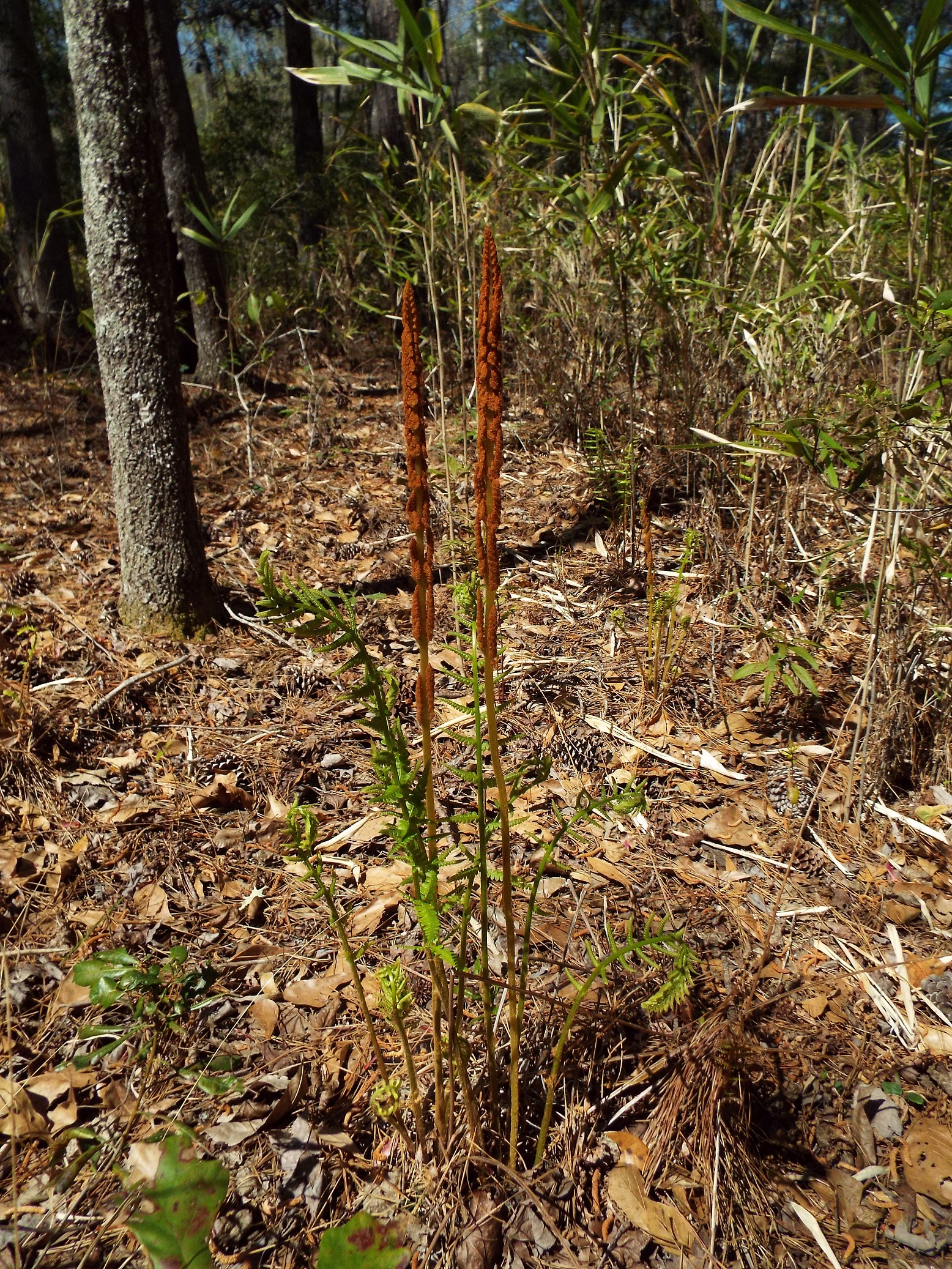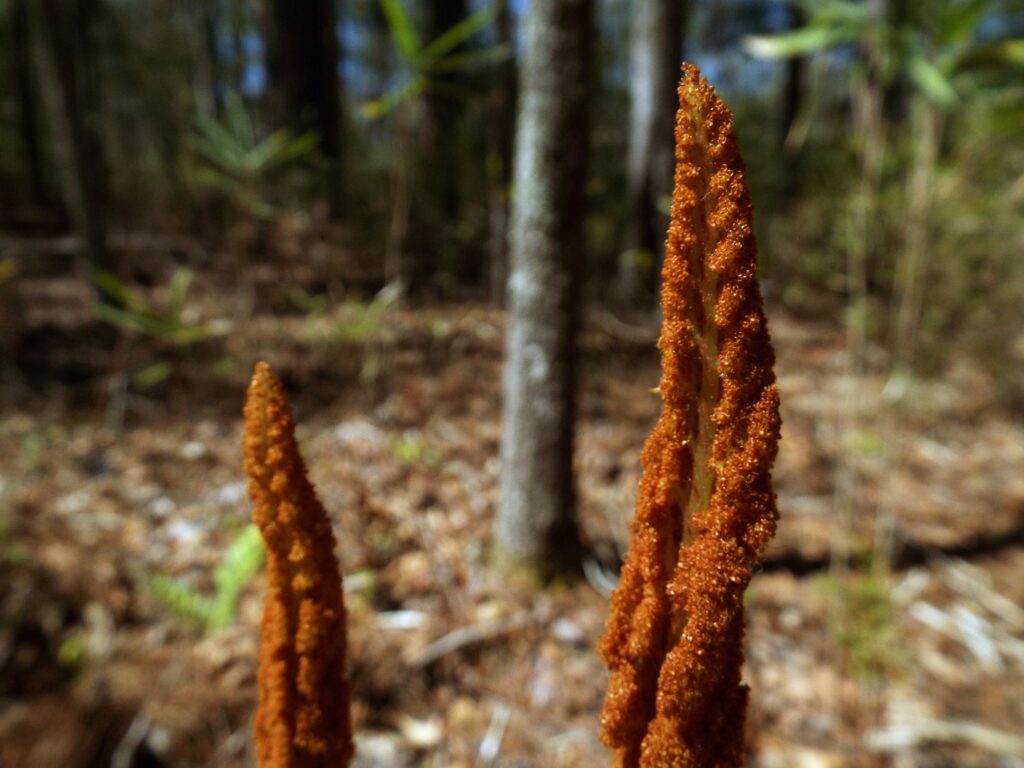

This week for Flora and Fauna Friday we find the first fern for the series. This week the subject is Cinnamon Fern (Osmundastrum cinnamomea).
Cinnamon Fern is a common species found throughout the forests of South Carolina. It prefers moist woodlands and floodplain forests. It is a large fern that can exceed 4ft in height. They are found both solitary and in large colonies. The species is a living fossil that has existed relatively unchanged for over 75 million years. The species produces large fronds that it holds erect above the forest floor. An easy way to identify cinnamon fern is by the clumps of fine reddish hairs at the nodes of the stem. The fronds are divided twice, and quite finely, giving them a feathery appearance. These divided leaf sections are called pinnae. These large leafy fronds are called sterile fronds and are used for photosynthesis. In the center of these sterile fronds, fertile fronds emerge. These fertile fronds are shorter, thinner, and point straight upward. The fertile vegetation has a granulated appearance and reddish-brown color, much like cinnamon.
This distinction between fertile and sterile fronds is made because ferns are not flowering plants or even seed-bearing plants. They produce no flowers, fruits, or seeds. They are more ancient vascular plants and reproduce with spores and in a manner similar, but different, to fungi. The almost microscopic sporangium can be thought of as the fern equivalent of a flower. The sporangia are borne on the underside of the leaves and are typically clustered in orange colored-spots called sori. In Cinnamon Ferns, the fertile fronds are almost entirely made of sporangia, lending the fronds their namesake color and granulated appearance. These spores require a wet surface to germinate and grow into a tiny specialized life stage called a gametophyte. This life stage is a separate plant, grows by photosynthesis on its own, and only has half the chromosomes of its parent. The fern gametophyte’s sole purpose is to create an embryo. It’s sort of like a flower but a separate plant. The embryo it creates grows into a new adult fern from within the gametophyte, like a seed in a flowering plant would. It’s not a very efficient process, which is why flowering plants have come to dominate the Earth but many fern species still find a home in wetlands were this reproductive strategy is still viable.